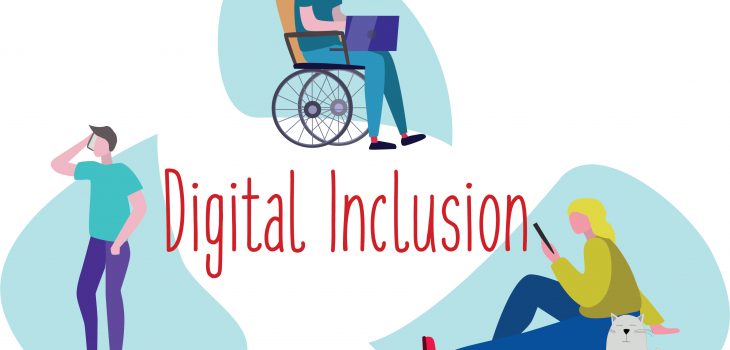
Digital inclusion in Europe in 2021
Democratization of information and communication technologies is fundamental for a modern society, it must be independent from the condition of each person. Technological development of a nation starts from participation in the social and economic life of all citizens.
The effective activation of policies and projects that allow more and more people to access the opportunities offered by the Internet.

The digital divide does more than divide people who have access to the internet from those who don’t.
Just think of the advantages provided by e-learning and smart working, which have become fundamental to guarantee an educational continuity to students and companies’ work, in a critical moment during the COVID-19 pandemic.
The European Commission itself has issued its guidelines to European nations to take action to improve digital inclusion. By enabling all people to contribute and benefit from the digital economy and society.
Based on the data provided by Eurostat for 2021, we can highlight two indicators of the state and progress achieved by European nations in the field of digital inclusion.
One relates to the percentage of people who have never accessed online services, the second relates to the percentage of the European population who access the internet at least once a week.
Percentage of people who in 2021 never made access to internet and digital services, broken down by country
Italy improves the percentage relating to this indicator. With -3% of the population that does not use the internet. From 14% in 2020 it has gone to 11% of the Italian population who never made access to the internet in 2021. Good news, to the digitization process of public administrations initiated by the Italian government, also thanks to funding from the PNRR. The launch of digital skills dissemination projects, which play a crucial role strengthening benefits produced by digital transformation as the basic principle of the #NextGenerationEU fund.
Most virtuous nations, with the lowest percentage of citizens who do not use digital services are Iceland, Norway, Sweden, Denmark and Luxembourg.
Data source: EurostatPercentage of people using the internet at least once a week in 2021, broken down by country of residence.
With + 4% the situation improves. Population that accesses the internet at least once a week goes from 76% in 2020 to 80%. Compared with other European nations, despite the progress made, Italy remains in fifth last place together with Serbia, Croatia and Portugal. Under Italy remain Albania, Greece, Bosnia and Herzegovina and finally Bulgaria. It’s interesting to observe how Ireland, with + 10% compared to the previous year, has gone from 89% in 2020 to 98%.
Italy remains in the group of European countries with the lowest digital inclusion.
A gap that penalizes Italian social and economic development, caused by a digitalization process that is not yet sufficiently inclusive for minors and families and socially disadvantaged people.
There are still many progresses and reforms to be implemented for a new virtuous circle, which makes it possible to retrieve this gap, therefore all the projects started with the #NextGenerationEU funds mustn’t be stopped or slowed down.